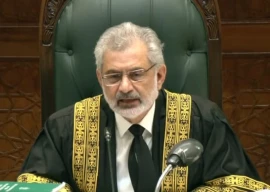
The Orbiting Carbon Observatory-2 took off aboard a Delta 2 rocket at 2:56 am from Vandenberg Air Force Base in California.
The successful takeoff was a boon to NASA, after two previous bids to launch Earth science spacecraft, one for carbon and another for aerosols, failed due to rocket malfunctions in 2009 and 2011.
An attempt to launch the satellite Tuesday was also aborted at the last minute, after engineers discovered a problem with water flow to the launch pad.
Tim Dunn, NASA launch director, said the team received "very good news" that the satellite's solar arrays had deployed on schedule and described the mood in mission control as one of "pure joy."
"The spacecraft was rock-solid," he said on NASA TV, after live video showed mission control staff hugging and shaking hands.
"It all came together tonight."
The satellite is now a part of the A-Train, a constellation of five other international Earth-observing satellites.
The OCO-2 mission lasts two years and aims to provide the most detailed picture to date of natural sources of carbon dioxide, where it is coming from and where it gets absorbed on the Earth's surface.
"The observatory will study how these sources and sinks are distributed around the globe and how they change over time," NASA said.
Human activities, like the burning of oil and coal, send nearly 40 billion tons of carbon dioxide into the atmosphere each year, according to the US space agency.
About half of that is absorbed back into forests and the oceans.
But scientists still know little about where and how the carbon is absorbed, and how to predict the effect that future rises in carbon dioxide will have on the Earth's climate.
"For society to better manage carbon dioxide levels in our atmosphere, we need to be able to measure the natural source and sink processes," said David Crisp, OCO-2 science team leader at NASA's Jet Propulsion Laboratory (JPL) in Pasadena, California.
The OCO-2 will take 24 measurements of carbon in the atmosphere every second, about a million per day, but clouds are a major obstacle.
Its field of view is about three square kilometers, so even wispy clouds can obscure its measurements.
NASA expects about 100,000 of the satellite's data snapshots from around the world daily will be sufficiently cloud-free to be useful.
"This challenging mission is both timely and important," said Michael Freilich, director of the Earth Science Division of NASA's Science Mission Directorate in Washington.
OCO-2's data will lay "the foundation for informed policy decisions on how to adapt to and reduce future climate change," he said.
COMMENTS (3)
Comments are moderated and generally will be posted if they are on-topic and not abusive.
For more information, please see our Comments FAQ














1710998259-0/pti-(1)1710998259-0-270x192.webp)


























Pakistan should be investing more in it's NASA equivalent space agency - SUPARCO. We should be aiming for the moon, mars and beyond like NASA.
Ok, so was this launch cheaper than the film "gravity"? (Indian question)
The CO2 data needs to be correlated with thermal imaging of the earth to relate green house gases to "global warming"
The law of thermodynamics says that any body that absorbs heat is also an equal emitter and the heat retained is directly related to its mass (heat capacity).
The thermal non- equilibrium conditions between outer space (cold) and the warmed earth (warm) suggests that heat absorbed by the earth and generated within the earth will dissipate back to outer space towards thermal equilibrium-heat pump. Hence green house gases contributing to alarming rise in earth temperature (0.5 Degree C so far, by the way) is against the global warming claim and overly emphasis on green houses. The majority of the green house gas is water vapor and not the CO2. The global warming emphasis on green house gases also ignores the heat capacity of earth's ocean water and ignores the internal heat generated by earth's core.
We all know that the earth has been warming since the last ice age, before the discovery of petroleum. What caused that warming before the petroleum ?
My apprehension is that the CO2 map data on emission will be used in global geopolitics and politicians will disregard the CO2 sink data and the developing countries will face the burden.
The developed nations use more hydrocarbons than the others, and combustion of hydrocarbon gives CO2, water, and heat energy which does work.
However, the current political discussions on global warming emphasize that burning dirty coal and increase consumption of petroleum by developing nations as the primary causes due to green house effect. Such argument is against all scientific principles.